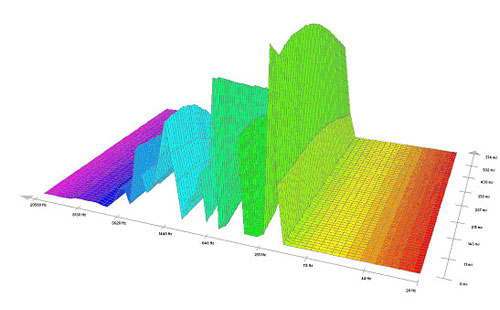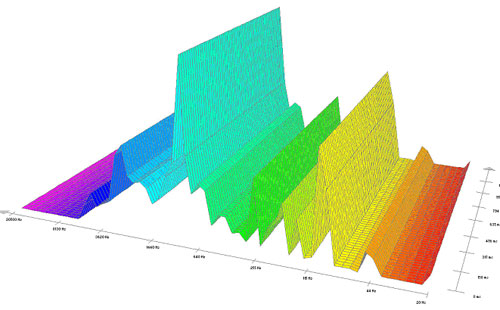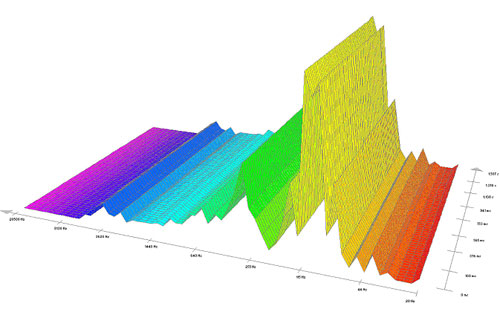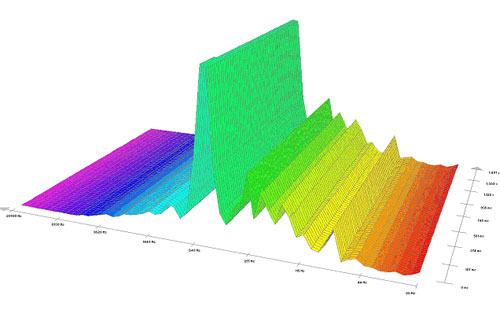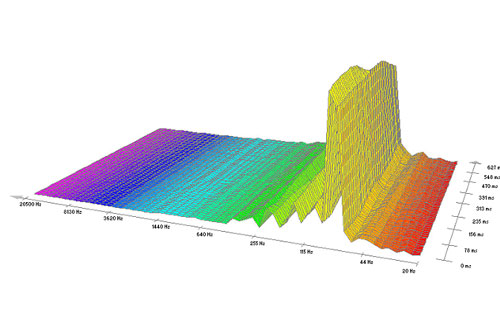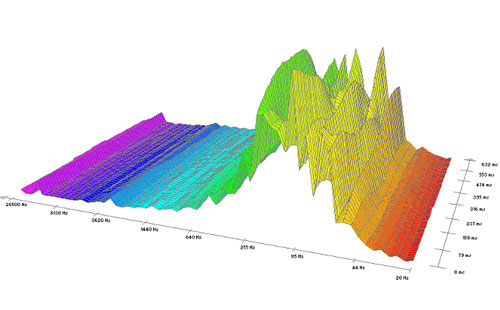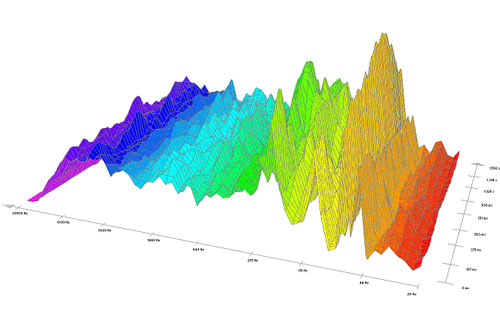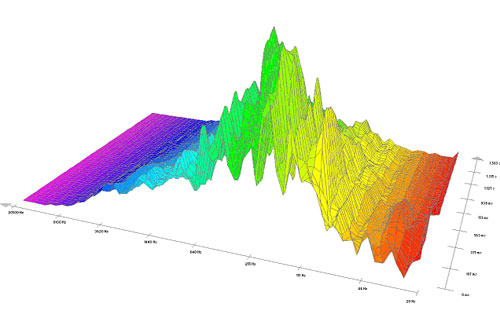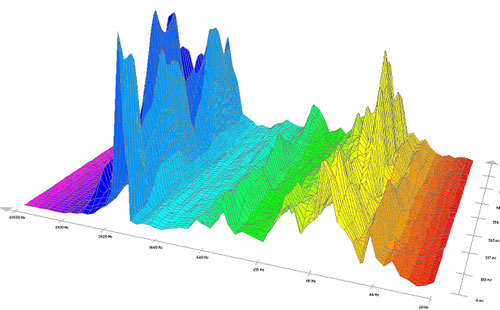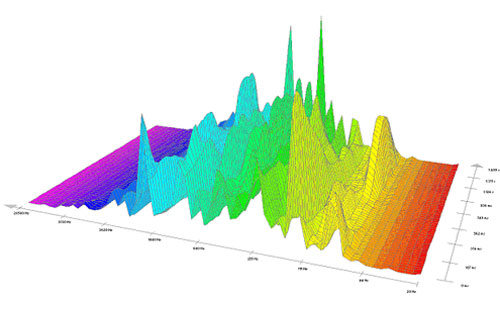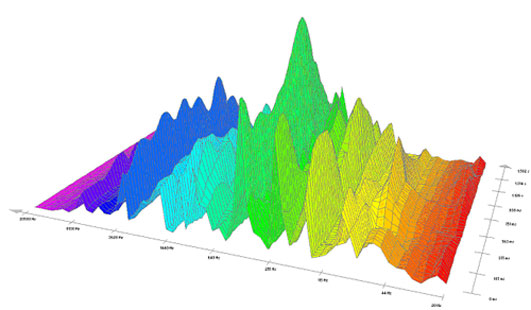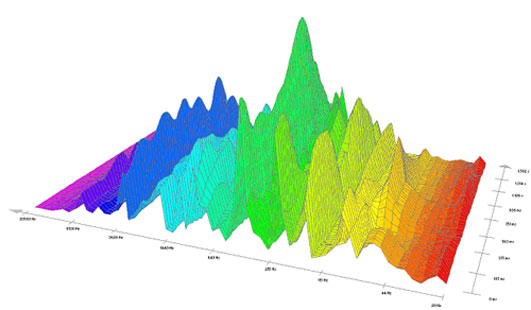Research Articles
The spectrographic analysis of the health state method SBSA
Edward John Eisimont (Edvardas Jonas Eismontas)
The spectrographic analysis of the health state method SBSA. The health state rehabilitation by the capabilities of ASK method
Download article in English (3,76 Mb PDF).
Download article in Russian (4,13 Mb PDF).
Adobe Reader program needed
The relative evaluation of ecosystem acoustic influences
Edward John Eisimont (Edvardas Jonas Eismontas)
Introduction
Nowadays more attention is paid to the problem of atmosphere pollution because a direct link with the climate on the Earth has been found out. However, the ecosystem research is not limited by this. The research of environment, surrounding a person, good (natural nature sounds, specific music) and evil sounds-noises (mostly those of industrial origin), is not less important.
The dispersion range of any object or system of acoustic vibrations in micro or macro environment is rather wide. It starts with mechanical and ends with electromagnetic ones. It concerns organic and inorganic structures.
Depending on the source of stimulation, the vibrations can be :
a) Automatic, which do not die after initial stimulus, e.g .a functioning ventilator, radio station,
b) The vibrations, arising in the outcome of the temporal outside influences (in vehicles, concert halls, clubs ).
c) Interlinked vibrations.( Several cases possible, e.g. one system generates vibrations, the other, at the beginning being still, but being in a kinematic connection ,starts vibrating, too.)
d) Parameter vibrations. (These are technical and natural nature systems, the parameters of which change in time, frequency, intensity, link.)
In the environment of industrial progress ,surrounding a human being, the holistic research method is wider applied.
In this work it was limited by the analysis of acoustic range: a human being- the vibrations, generated by technical equipment (evil noise),a human being – nature (good influence), a human being – music (good and evil (bad) influence).
The fundamental research fragments in the system -a human being – hearing organs, in the aspect discussed, are not analysed in this article. It is relied on classical generalization of physiological psychology.[2]
Basically it concerns the researches of hearing analysers in the system: analyser – the central nerve system.
When analysing the acoustic components, it was evaluated :a) physical sound abilities b) the functional characteristics of a hearing apparatus c) the reflex act(consciousness absent)d) the reaction of integrated nerve system e)tissue(skin muscles, bones, specific organs) irritability dynamic activity.
The size of the article limits to reveal the well-known information described in various articles and monographs, analysing a person’s physiology in detail.
Actual is another- to initiate a wider complex research sphere, in sequence of which , to cover the more entire reaction of a person’s organism to the extensive influence of vibration spectrum ,localized in physiological environment. It is empathized that the outer vibrations can be harmful to the whole person’s organism ,and in the aspect of autonomic specific organs of a person -to hearing and tissue cells.
On the contrary, the environment vibrations are capable of providing not only the reaction of esthetical delight but also can have curing features [3](including diagnostics).
In the research environment an efficient attention is given to the discussion of water component because outer vibrations have influence on its structure. The results of the researches proved that water remembers the sceneries of outer influences. [4]It is important to accent because it is known, that depending on a person’s age inside the tissue cells there is about 60-70 of the whole body water.25-40 % of it is in the inter-cell environment. Including blood reservoirs, (there are 5-7 liters of blood in a person’s organism). So the main component is water, too.
Methods
When analysing the components of acoustic field spectrum and realizing the data in the three-dimensional graphics, special software of voice research and analysis was used.In the three-dimensional diagram the spectogramme of vibrations is shown.
Pic. No 1. The vibration spectrogramme.
The research aspects
Having used the discussed research method, the following experiments, characterizing three specific cases have been done:
1. In the plant environment which is polluted by (noises) vibrations of technical origin.
2. In natural nature conditions.
3. Listening to music a) exclusive esthetic and b) the destructive –destroying the ecosystem.
The three-dimensional sound-noise spectogramme in the plant environment is shown in Pic. No 2.
Pic. No 2. Sound-noise spectogramme.
Maximal “sharp“ and little changeable acoustic noise amplitude of inharmonious origin is 1480Hz.As in the environment there is not only one sound source ,there are a lot of secondary inharmonious accompanying sounds.
Such type acoustic pollution of ecosystem damages not only the hearing apparatus, the whole nerve system but also local body organs. So, protective earphones are little effective. The sound-noise negative influence on the person’s organism in the industrial environment is analysed thoroughly in the publication. [1] Similar three-dimensional graphic is the evidence of the acoustic situation when flying in a helicopter in a distance of about 300-400m.from mobile helicopter laboratory.
Pic. No 3. Sound- noise spectogramme (in a helicopter).
There is a specific case when rather low (from 110 to 122Hz) dominating inharmonious tonic is expressed. The researches were also done in a mobile laboratory established in a Fiat Scudo base, the car engine functioning. (Pic. No 4.)
Pic. No 4. Sound-noise spectogramme (car engine functioning).
In this example we see clearly expressed inharmonious frequency tonic 65Hz very little changeable in time. The influence of such noise to the environment is quite different.
The researches done in Arch cathedral square of Vilnius:
There are a lot of architectural monuments in Vilnius, especially in Catholic churches.
One of the most popular-Arch cathedral basements, in the basements of which Lithuanian rulers were buried, in the Royal cathedral chapel there are St. Casimir’ remains. That is one of the central city squares. Various events are held here, during which powerful sound intensification equipment is used. To prepare a concert, which was held near Vilnius Arch cathedral on 10-03-2008,a powerful electricity production (in the lorries) was at the distance of one meter from the Royal chapel.
The photo No 1. Mobile electricity Production stations near Arch cathedral of Vilnius. The researches were done while functioning the generators of electric production. The spectogramme of the noise made outside, near the cars. (Pic. No 5.)
Pic. No 5. Sound-noise spectogramme when the mobile electricity Production laboratory is functioning (In 3m. to the Arch cathedral).
The spectrogramme of noise recorded in the chapel of Arch cathedral (Pic. No 6.)
Pic. No 6 The noise spectogramme spread in the chapel of Arch cathedral.
It was registrated when the sound wave spread through the resonated leading inharmonious vibrations. It can initiate the destruction of elements, being in the chapel.
The environment of natural nature sounds
From the point of view of comparative methodic the purpose is to analyse the three-dimensional graphics, got when registrating natural nature sounds. (Pic. No 7.) Here the rain spectogramme is shown.
Pic No. 7. Rain spectogramme.
The sound spectrum encloses a very wide harmonious connected successive vibration diapason, the influence of which on a person is very acceptable and positive. The spectogramme recorded in a natural environment
Pic. No. 8 The sound of Thunder influences a person’s physiology positively- the heart, gut [5].
The nature sounds in the forest. Pic No. 9.
Pic. No 9 The spectogramme of nature sounds.
In the spectogramme we see the harmonious dynamic connection of low and high frequencies that have a positive influence on a person’s psychosomatics.
It has a positive influence on the vegetative nerve system. The sea sounds have similar effect on the environment.
The influence of music environment
For the analysis of music sounds the author used the compositions of the well-known classics (V.A.Mozart, P.Tchaikovsky., J.Strauss.) The compositions of the author of this article were analysed, too. (Created in five musical projects “Peace and hope” 1997.,”Ocean” 1998., “Vis Vitalis” 2005 and etc.)
It was tried to test what dominating frequencies of acoustic vibrations influence the state of one or another person’s organ causing good bioresonance effects or, on the contrary, - can provoke deductive symptoms. It is investigated [6] that Mozart’s music “helps organize” activated cortex. In this outcome the stress in the person’s organism decreases, the feeling of free space is created and safety feeling becomes stronger. Elegance and sincerity are stimulated; a good communication atmosphere is created. It is proved in the works of A.Tomatis. [7]
However, a reverse influence is possible. Even the music of Mozart or other composer can cause not only positive influence but it can emaciate. It can depend on the performer.
Pic. No. 10 V.A.Mozart’s music spectrographic extract.
Pic. No. 10. The spectrographic view of the V.A.Mozart’s music extract.
V.A.Mozart’s music is very dynamic, including a wide spectrum of harmonic amplitudes. It depends on the perfect musical – instrumental composition.
Pic. No 12. The spectogramme of Pop music (song) fragment.
This music is poorer.(The general sounding dynamics). The clearly expressed low tone (from 40 to 260Hz.) rhythmical instruments are seen here. Meanwhile a very poor melody is separated (1100-3200Hz.). The music of such genre changes very little during the whole musical composition. The low tone rhythmical sound, constantly repeated, can negatively influence a person’s physiology. Especially those who suffer from heart diseases.(Especially when the sound volume is more than 80dB.). Such music stimulates aggression, it can increase potency.
As we can see in Pic. No 11, the author’s spectrographic view of extract “Peace and hope”
has a lot of accompanying harmonic tonics that depend on natural nature sounds, recorded together with the music. Besides, the author, before creating the music, knowing its purpose, using traditional instruments, also creates special additional instruments, sounds.
Using this method, it is done by analyzing the instrument-sound, being created.
The discussion of the researches
In the tested local zone the industrial workshop workers under the influence of intensive noise (wood saw), though they used sound blockading headphones, after 6-8 months they felt unwell: not only the hearing organs were damaged but also the normal function of the heart, the co-ordination, the gut. It is ascertained that depending on the duration and intensity of the noise ,irrevocable hearing damages occur [8] For example, if the noise intensity is 99dB, the negative irrevocable consequences can occur after one hour and at the noise level of 117dB it can happen in one minute. [1]
In these cases the relative hearing sensitiveness is revealed in the range of high frequency and, on the contrary, it distinctly decreases in averagely 4000Hz sphere.
It is also proved that rather intensive noise in the characteristic critical range of vibrations can cause a blockade of the heart function.
The consequence is clear – death. All those negative effects on the person’s body are rather individual because the parameter indexes are changeable in the respect of time and environment. Natural nature sounds effect a person rather differently. It is useless to proof. Being in a forest, by the river, when it is raining, at the sea affect the person’s organism positively only because the spectrum is rich in different frequency (largo, glissando environment) integrated vibrations among themselves.
The author, creating music, analyzing acoustic spectogrammes, has not only cognitive aim. Musical compositions are applied in diagnosing general diseases and curing all the organism unwell ness. Spectral analysis of sounds helps “see” theoretically, prove the spectral vision, favourable to the person organism. This method can be widely used when testing the music of different composers, ascertaining applicability for psychotherapy aims.
According to the person’s body ,the influence of musical composition is particularly specific.
For many years the influence of good music to a person is widely discussed (that is a very relative attitude). There is a new profession – “music therapy”. Working professionally in this therapy sphere, it is important to do it on the bases of scientific tests.
The compositions of J.S.Bach , V.A. Mozart , and other classics, fragmentically evaluating, can be panacea from some diseases.
Mainly overtones define the timbre of a person and musical instruments. Having left the first constant sound of musical mode-tonics, we would not be able to distinguish the tonics of a person’s voice from the piano or violin. Some overtones, characteristic for one or another sound, influence a concrete body part or organ, causing bioresonance, chaos in the structures of molecular clusters and influence a person’s nerve system in general.
Gi technical sound specter is heterogeneous inharmonious, only inharmonious intensity of characteristic frequencies changes in time.
2008
Literature:
1. Р. Тэйлор ШУМ изд. “Мир " 1978 стр. 92
2. P.M.Milner Physiolologikal Psyhology 1970 NEW YORK - SYDNEY
3. E. I. Gonikman Gydomieji DAO garsai. Vilnius “Asveja” 2001 m. 159 p.
4. M. Emoto Zinia, kurią mums pranesa vanduo. Kaunas “Mijalba” 2007 184 p. (dr.M.Emoto, I.Kijosi ir kt.)
5. prof. Hab.dr. V.Obelenis Triuksmas ir sveikata , “Promoting health and safety in European Small and Medium-sized Enterprises (SMEs). European Agency for Safety and Health at Work, 2004”
6. D. Kempbell V.A. Mocarto muzikos poveikis. Kaunas “Vilties oaze” 2005 m. 336 p.
7. A. Tomatis The Ear and Language. Ontario Moulin Publching, 1996 p.318 A. Tomatis The Conscions Ear: My Life of Transformation through Listening. Barrytown, N.Y. Station press
8. J.Asmenskas, A.Baubinas, V.Obelenis, B.Simkūniene. Aplinkos medicina. Vilnius “Avicena”,1997).
9. P.P.Goriajev “Daosskije lecebnije zvuki”

